A Comprehensive Characterization of the TI-LGAD Technology
Abstract
:1. Introduction
2. Materials and Methods
2.1. The TI-RD50 Production and Devices Studied
- Trench depth.
- This parameter defines the depth of the trenches that are etched in the silicon. Three different values were explored, namely D1, D2, and D3, with increasing trench depth,
- Number of trenches.
- This defines the number of trenches that provides isolation between neighboring pixels. In the TI-RD50 production, devices were fabricated either with one or two trenches. In the one-trench designs, a square reticle of trenches was implemented, whilst in the two-trench designs, each pixel was encircled by a trench, thus resulting in two trenches at the interface. The different geometries are illustrated in Figure 1.
- Pixel border.
- This parameter refers to the distance that is left between the edge of the gain layer and the center of the trenches structure. Four values were produced, V1, V2, V3 and V4 with increasing distance,as illustrated in the side view schematic of Figure 1.
- Contact type.
- This defines the way the contact between the external metallization for the interconnection of the pixels and the implant is performed. Two different contact types were explored, type 1 and type 2, also referred to as ring and dot, respectively, throughout this work.
- pixels of size for each pixel.
- pixels of size for each pixel.
- pixels of size for each pixel.
2.1.1. Irradiation Campaign
2.2. Experimental Setups
2.2.1. TCT Setup
2.2.2. Beta Source Setup
2.2.3. Test Beam Setup
2.3. Data Collection and Analysis
2.3.1. Waveform Analysis
2.3.2. Inter-Pixel Distance
2.3.3. Time Resolution
2.3.4. Collected Charge
3. Results
3.1. Inter-Pixel Distance
3.2. Cross Talk and Radiation Resilience of Trenches
3.3. Time Resolution Uniformity
3.4. Time Resolution and Collected Charge
3.4.1. Beta Setup
- for ;
- for ;
- for .
3.4.2. Test Beam
4. Conclusions
Author Contributions
Funding
Acknowledgments
Conflicts of Interest
References
- Ferrero, M.; Arcidiacono, R.; Mandurrino, M.; Sola, V.; Cartiglia, N. An Introduction to Ultra-Fast Silicon Detectors: Design, Tests, and Performances; CRC Press: Boca Raton, FL, USA, 2021; ISBN 978-1-00-313194-6. [Google Scholar] [CrossRef]
- Pellegrini, G.; Fernández-MartÃnez, P.; Baselga, M.; Fleta, C.; Flores, D.; Greco, V.; Hidalgo, S.; Mandić, I.; Kramberger, G.; Quirion, D.; et al. Technology developments and first measurements of Low Gain Avalanche Detectors (LGAD) for high energy physics applications. Nucl. Instruments Methods Phys. Res. Sect. A Accel. Spectrometers Detect. Assoc. Equip. 2014, 765, 12–16. [Google Scholar] [CrossRef]
- Siviero, F.; Arcidiacono, R.; Borghi, G.; Boscardin, M.; Cartiglia, N.; Vignali, M.C.; Costa, M.; Dalla Betta, G.F.; Ferrero, M.; Ficorella, F.; et al. Optimization of the gain layer design of ultra-fast silicon detectors. Nucl. Instruments Methods Phys. Res. Sect. A Accel. Spectrometers Detect. Assoc. Equip. 2022, 1033, 166739. [Google Scholar] [CrossRef]
- Paternoster, G.; Borghi, G.; Arcidiacono, R.; Boscardin, M.; Cartiglia, N.; Centis Vignali, M.; Dalla Betta, G.F.; Ferrero, M.; Ficorella, F.; Mandurrino, M.; et al. Novel strategies for fine-segmented Low Gain Avalanche Diodes. Nucl. Instruments Methods Phys. Res. Sect. A Accel. Spectrometers Detect. Assoc. Equip. 2021, 987, 164840. [Google Scholar] [CrossRef]
- Tornago, M.; Arcidiacono, R.; Cartiglia, N.; Costa, M.; Ferrero, M.; Mandurrino, M.; Siviero, F.; Sola, V.; Staiano, A.; Apresyan, A.; et al. Resistive AC-Coupled Silicon Detectors: Principles of operation and first results from a combined analysis of beam test and laser data. arXiv 2020, arXiv:2007.09528. [Google Scholar] [CrossRef]
- Menzio, L.; Arcidiacono, R.; Borghi, G.; Boscardin, M.; Cartiglia, N.; Vignali, M.C.; Costa, M.; Betta, G.F.D.; Ferrero, M.; Ficorella, F.; et al. DC-coupled resistive silicon detectors for 4-D tracking. arXiv 2022. [Google Scholar] [CrossRef]
- Paternoster, G.; Borghi, G.; Boscardin, M.; Cartiglia, N.; Ferrero, M.; Ficorella, F.; Siviero, F.; Gola, A.; Bellutti, P. Trench-Isolated Low Gain Avalanche Diodes (TI-LGADs). IEEE Electron Device Lett. 2020, 41, 884–887. [Google Scholar] [CrossRef]
- Senger, M.; Bisht, A.; Borghi, G.; Boscardin, M.; Centis Vignali, M.; Ficorella, F.; Ali, O.H.; Kilminster, B.; Macchiolo, A.; Paternoster, G. Characterization of timing and spacial resolution of novel TI-LGAD structures before and after irradiation. Nucl. Instruments Methods Phys. Res. Sect. A Accel. Spectrometers Detect. Assoc. Equip. 2022, 1039, 167030. [Google Scholar] [CrossRef]
- Curras, E.; Carulla, M.; Centis Vignali, M.; Duarte-Campderros, J.; Fernández, M.; Flores, D.; García, A.; Gómez, G.; González, J.; Hidalgo, S.; et al. Inverse Low Gain Avalanche Detectors (iLGADs) for precise tracking and timing applications. Nucl. Instruments Methods Phys. Res. Sect. A Accel. Spectrometers Detect. Assoc. Equip. 2020, 958, 162545. [Google Scholar] [CrossRef] [Green Version]
- Ayyoub, S.; Gee, C.; Islam, R.; Mazza, S.M.; Schumm, B.; Seiden, A.; Zhao, Y. A new approach to achieving high granularity for silicon diode detectors with impact ionization gain. arXiv 2021, arXiv:2101.00511. [Google Scholar]
- CERN RD50—Radiation Hard Semiconductor Devices for Very High Luminosity Colliders. Available online: https://cern.ch/rd50 (accessed on 1 July 2023).
- CMS Collaboration. The Phase-2 Upgrade of the CMS Tracker; Technical Report CERN-LHCC-2017-009; CMS-TDR-014; CERN: Geneva, Switzerland, 2017; Available online: https://cds.cern.ch/record/2272264 (accessed on 1 July 2023).
- Qorvo. SPF5189Z Datasheet. Available online: https://www.qorvo.com/products/p/SPF5189Z (accessed on 1 July 2023).
- Ronzhin, A.; Albrow, M.; Demarteau, M.; Los, S.; Malik, S.; Pronko, A.; Ramberg, E.; Zatserklyaniy, A. Development of a 10ps level time of flight system in the Fermilab Test Beam Facility. Nucl. Instruments Methods Phys. Res. Sect. A Accel. Spectrometers Detect. Assoc. Equip. 2010, 623, 931–941. [Google Scholar] [CrossRef]
- Ronzhin, A.; Los, S.; Ramberg, E.; Spiropulu, M.; Apresyan, A.; Xie, S.; Kim, H.; Zatserklyaniy, A. Development of a new fast shower maximum detector based on microchannel plates photomultipliers (MCP-PMT) as an active element. Nucl. Instruments Methods Phys. Res. Sect. A Accel. Spectrometers Detect. Assoc. Equip. 2014, 759, 65–73. [Google Scholar] [CrossRef]
- Apresyan, A.; Bolla, G.; Bornheim, A.; Kim, H.; Los, S.; Pena, C.; Ramberg, E.; Ronzhin, A.; Spiropulu, M.; Xie, S. Test Beam Studies Of Silicon Timing for Use in Calorimetry. Nucl. Instruments Methods Phys. Res. Sect. A Accel. Spectrometers Detect. Assoc. Equip. 2016, 825, 62–68. Available online: https://inspirehep.net/files/f6b1cd929d10bb6fe53679fd2f38d3c7 (accessed on 4 July 2023). [CrossRef] [Green Version]
- Bornheim, A.; Pena, C.; Spiropulu, M.; Xie, S.; Zhang, Z. Precision timing detectors with cadmium-telluride sensor. Nucl. Instruments Methods Phys. Res. Sect. A Accel. Spectrometers Detect. Assoc. Equip. 2017, 867, 32–39. [Google Scholar] [CrossRef]
- Kolanoski, H.; Wermes, N. Particle Detectors: Fundamentals and Applications; Oxford University Press: Oxford, UK, 2020; ISBN 978-0-19-189071-0. Available online: https://cds.cern.ch/record/2721300 (accessed on 27 January 2021).



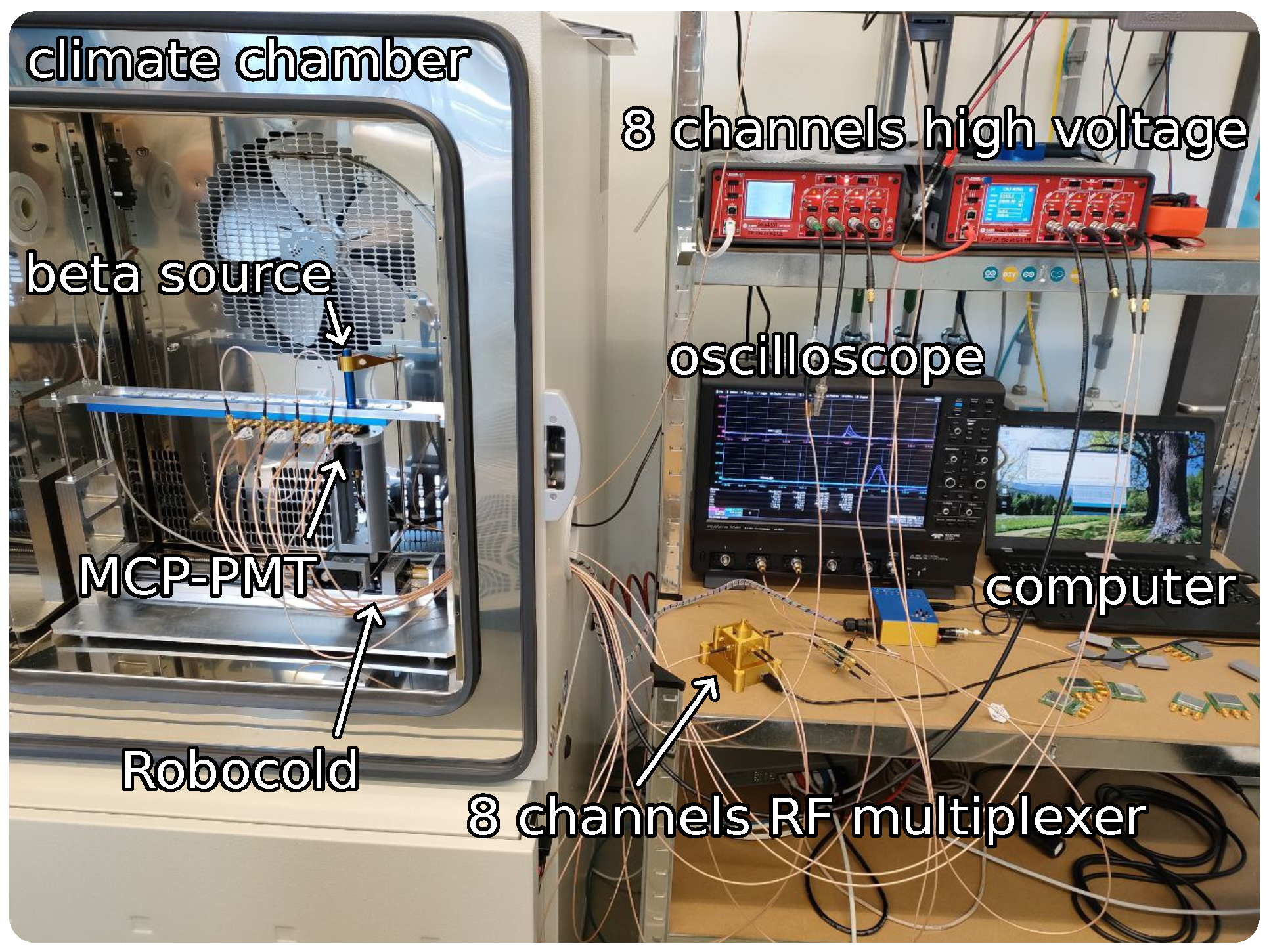
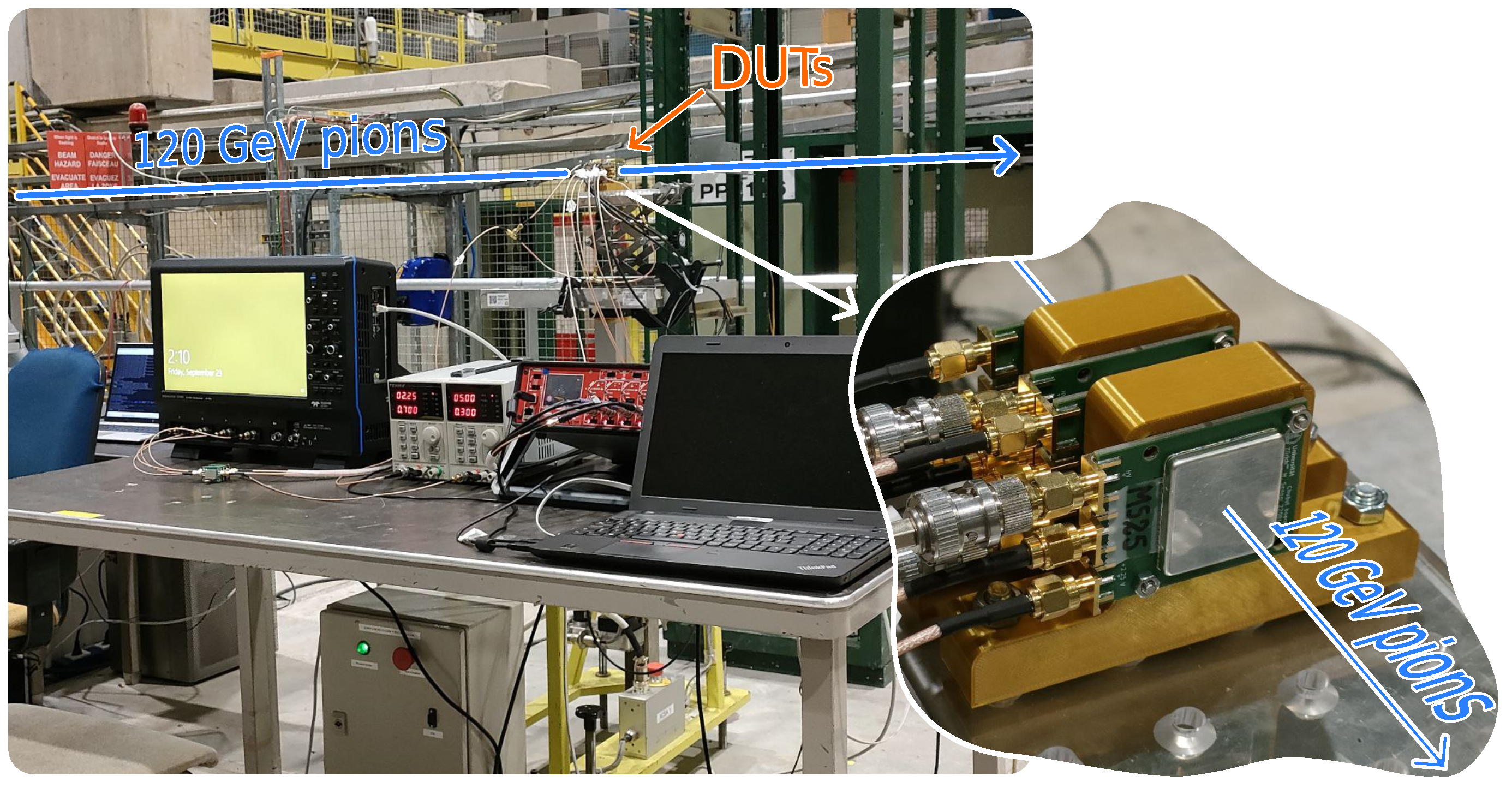





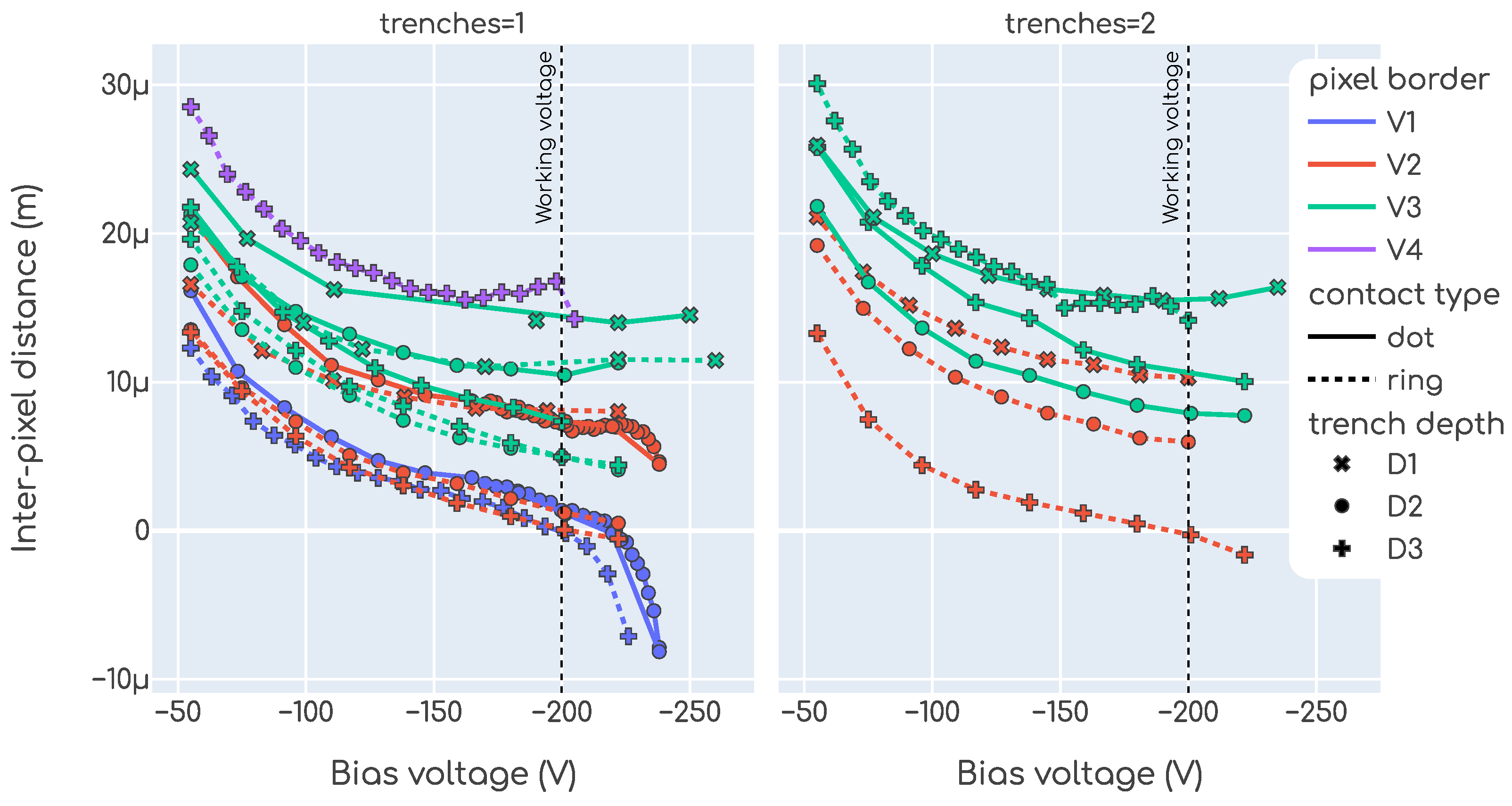
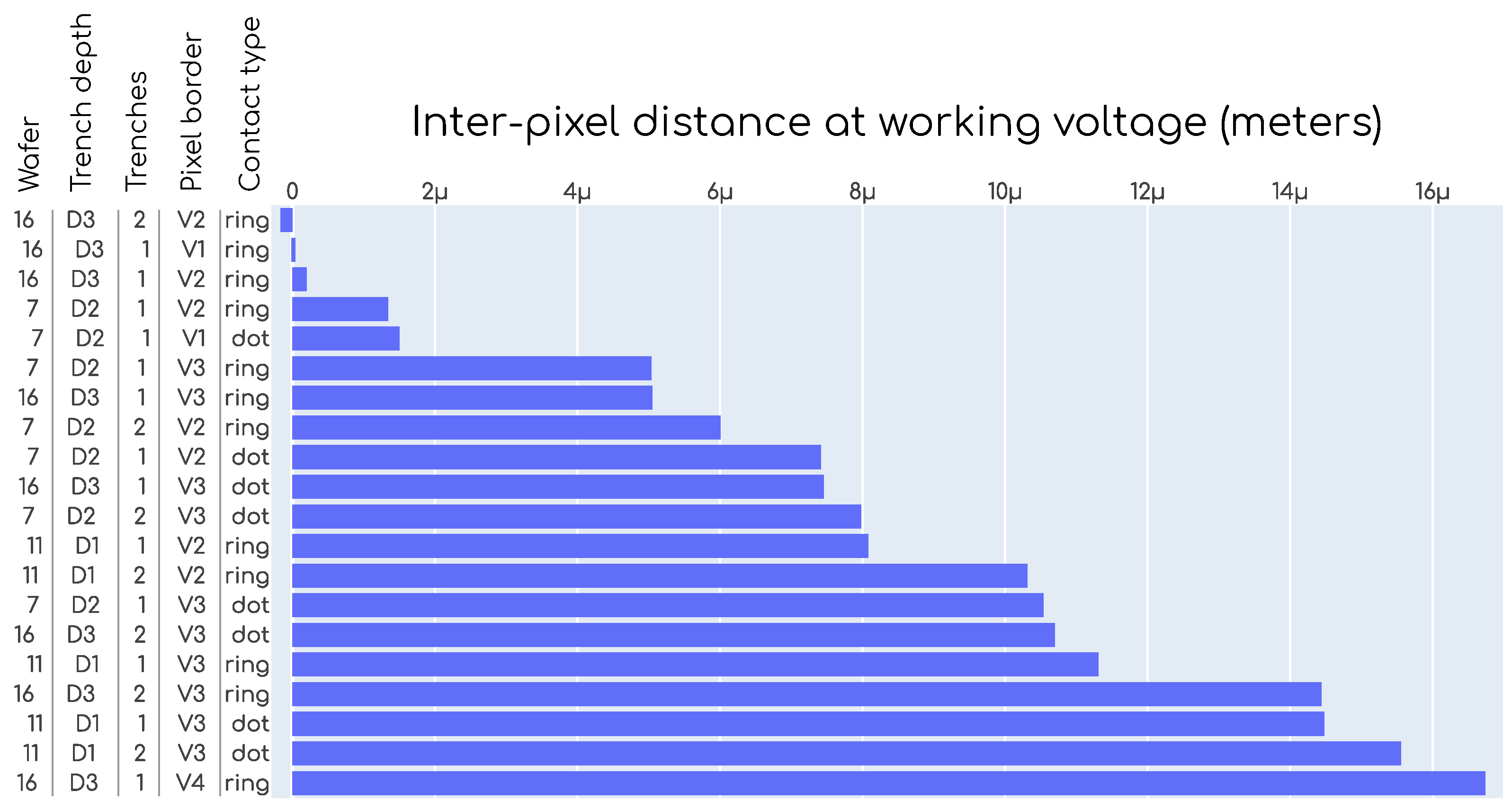

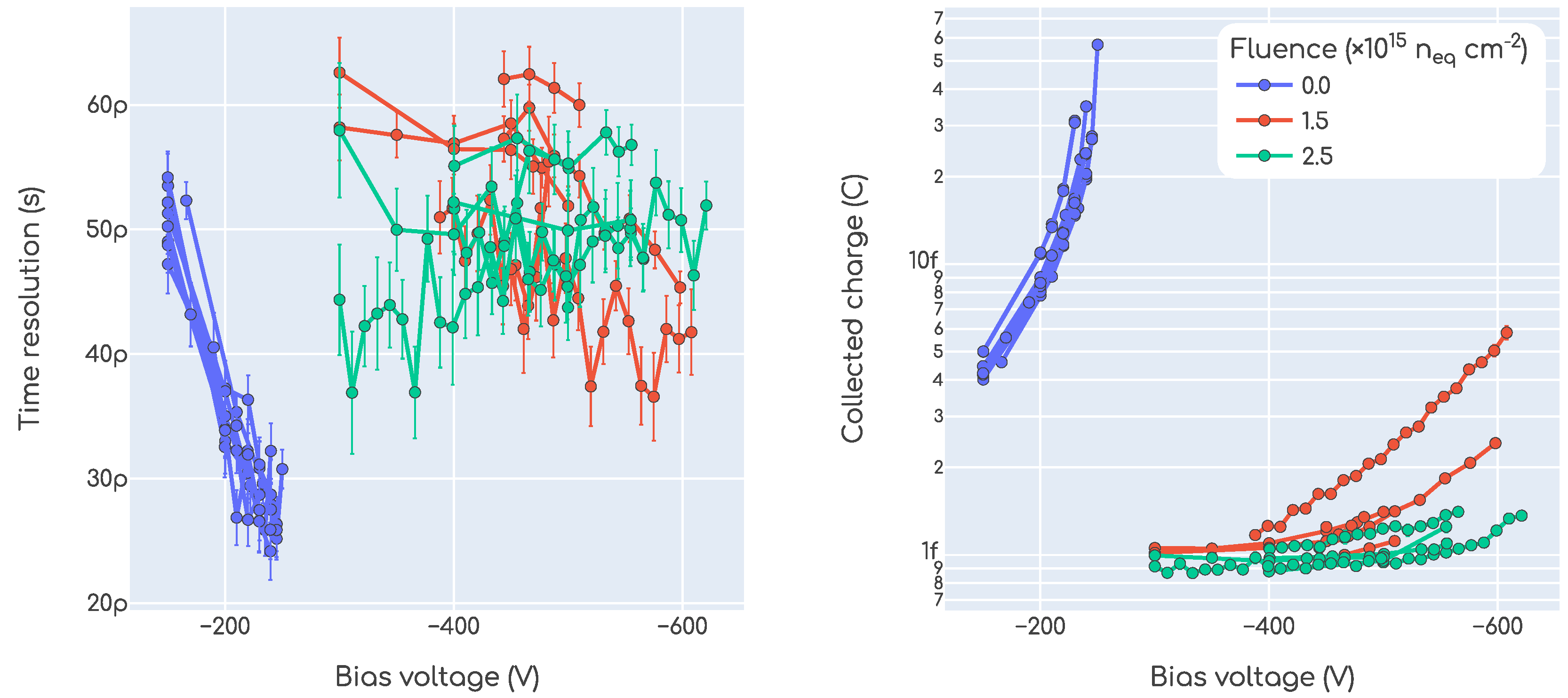
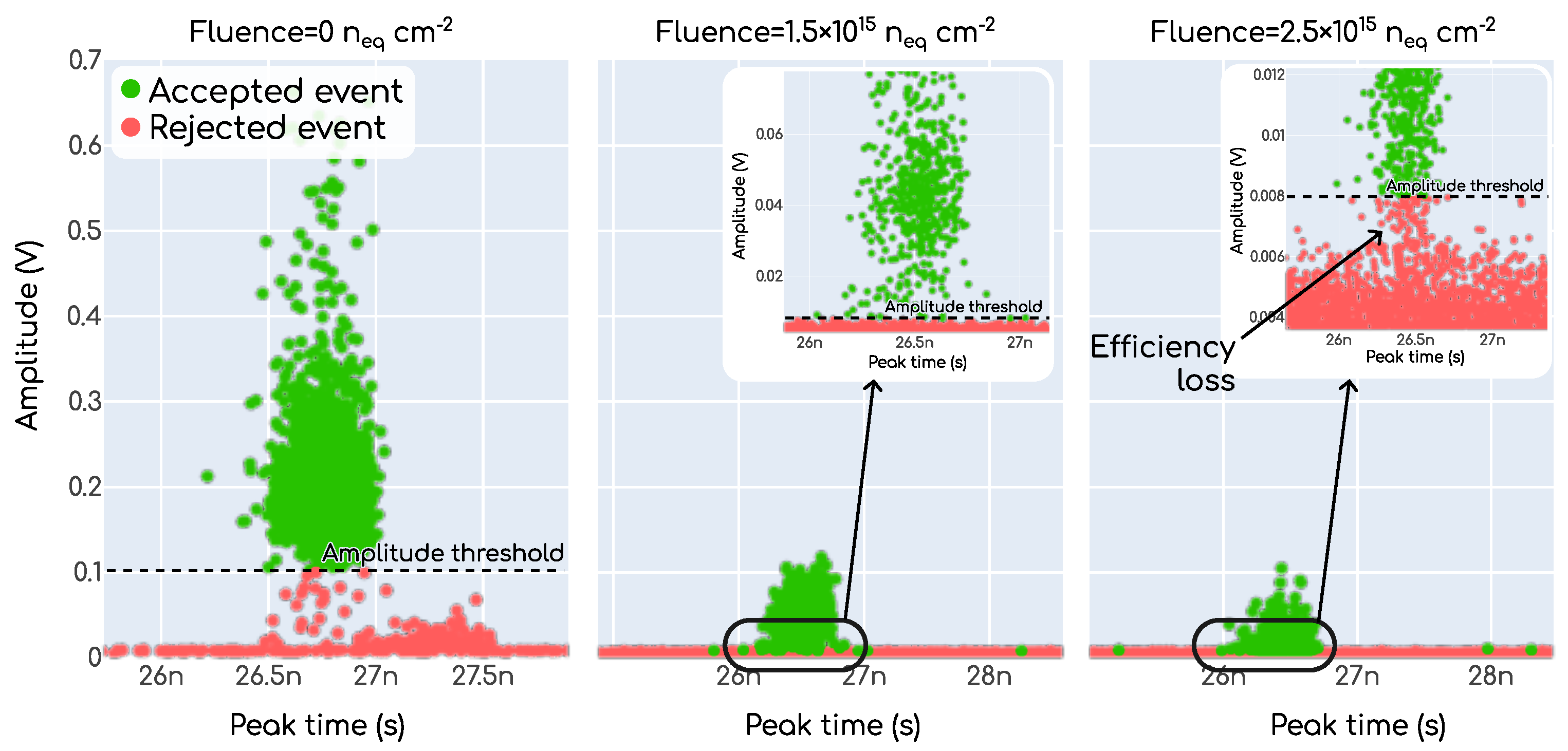

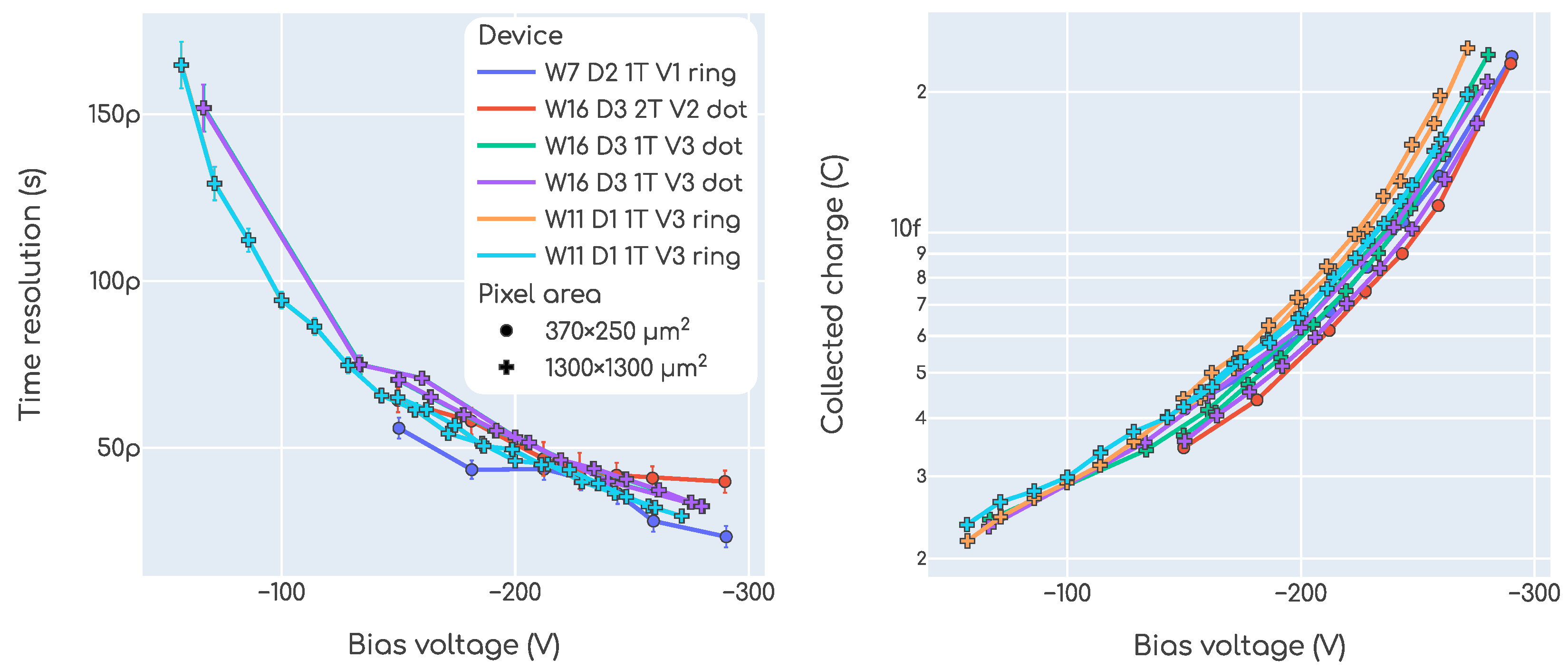
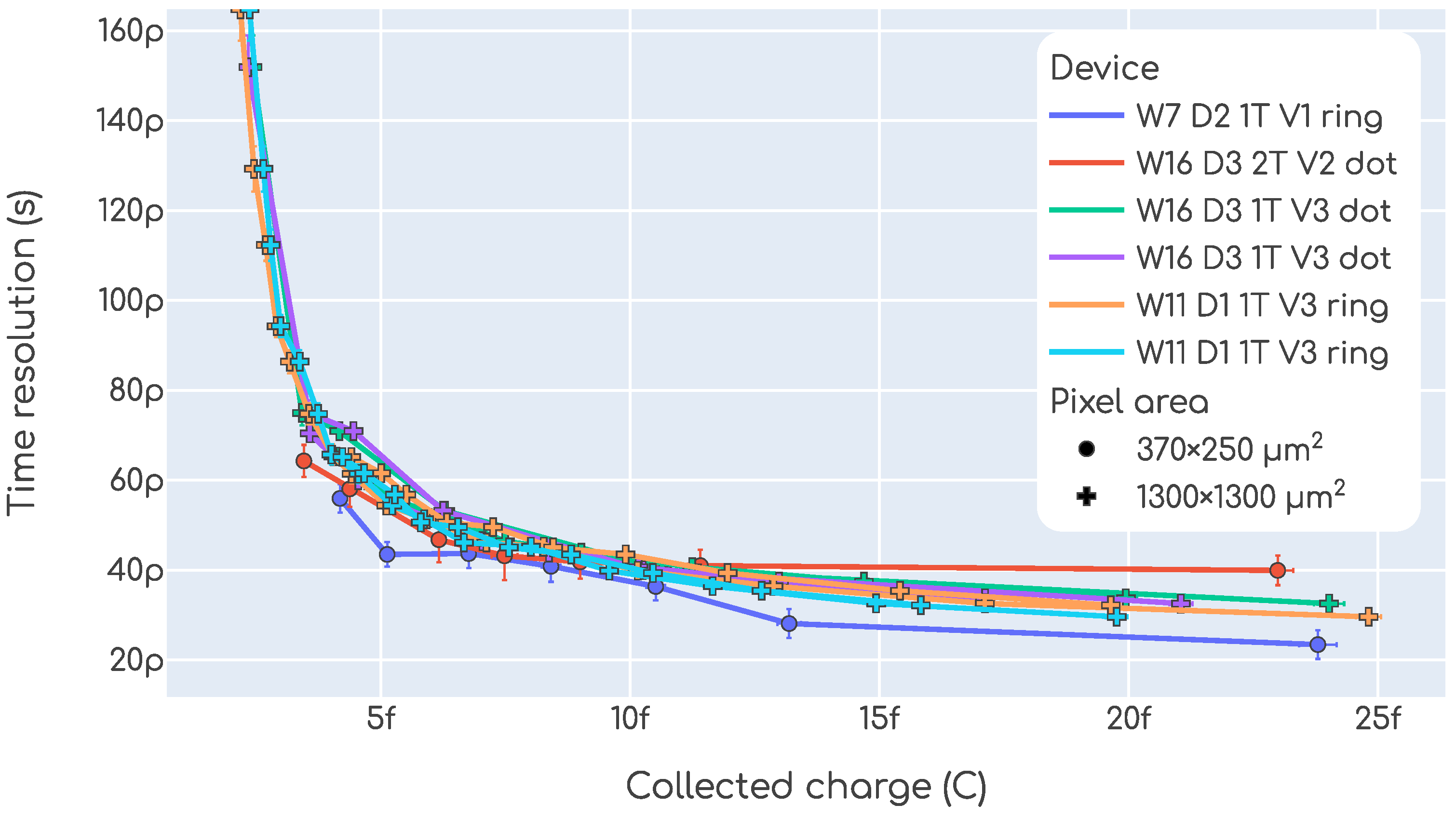
Disclaimer/Publisher’s Note: The statements, opinions and data contained in all publications are solely those of the individual author(s) and contributor(s) and not of MDPI and/or the editor(s). MDPI and/or the editor(s) disclaim responsibility for any injury to people or property resulting from any ideas, methods, instructions or products referred to in the content. |
© 2023 by the authors. Licensee MDPI, Basel, Switzerland. This article is an open access article distributed under the terms and conditions of the Creative Commons Attribution (CC BY) license (https://creativecommons.org/licenses/by/4.0/).
Share and Cite
Senger, M.; Macchiolo, A.; Kilminster, B.; Paternoster, G.; Centis Vignali, M.; Borghi, G. A Comprehensive Characterization of the TI-LGAD Technology. Sensors 2023, 23, 6225. https://doi.org/10.3390/s23136225
Senger M, Macchiolo A, Kilminster B, Paternoster G, Centis Vignali M, Borghi G. A Comprehensive Characterization of the TI-LGAD Technology. Sensors. 2023; 23(13):6225. https://doi.org/10.3390/s23136225
Chicago/Turabian StyleSenger, Matias, Anna Macchiolo, Ben Kilminster, Giovanni Paternoster, Matteo Centis Vignali, and Giacomo Borghi. 2023. "A Comprehensive Characterization of the TI-LGAD Technology" Sensors 23, no. 13: 6225. https://doi.org/10.3390/s23136225
APA StyleSenger, M., Macchiolo, A., Kilminster, B., Paternoster, G., Centis Vignali, M., & Borghi, G. (2023). A Comprehensive Characterization of the TI-LGAD Technology. Sensors, 23(13), 6225. https://doi.org/10.3390/s23136225







